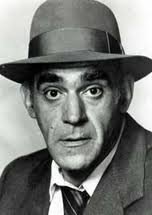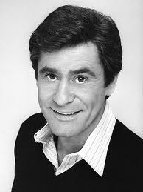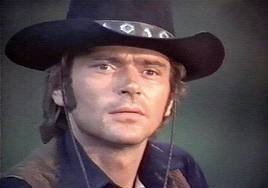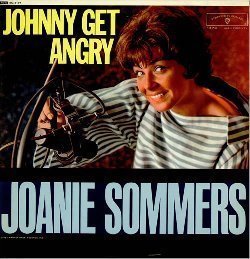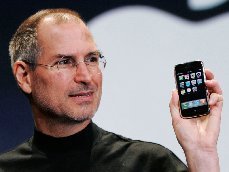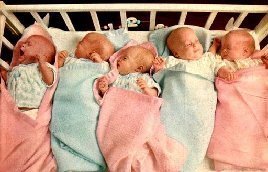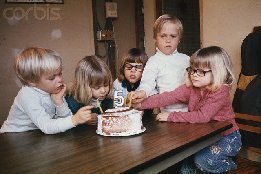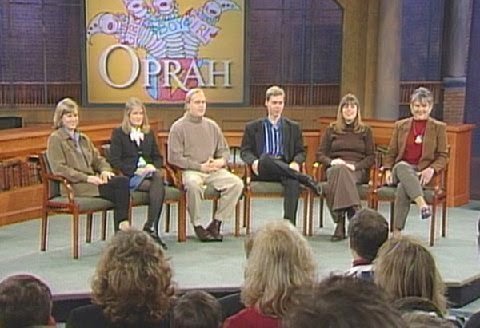A breathalyzer or breathalyser (a portmanteau of breath and analyzer/analyser) is a device for estimating blood alcohol content (BAC), or to detect viruses or diseases from a breath sample.
The name is a genericized trademark of the Breathalyzer brand name of instruments developed by inventor Robert Frank Borkenstein in the 1950s.
A 1927 paper produced by Emil Bogen, who collected air in a football bladder and then tested this air for traces of alcohol, discovered that the alcohol content of 2 litres of expired air was a little greater than that of 1 cc of urine. However, research into the possibilities of using breath to test for alcohol in a person's body dates as far back as 1874, when Francis E. Anstie made the observation that small amounts of alcohol were excreted in breath.
Also, in 1927 a Chicago chemist, William Duncan McNally, invented a breathalyzer in which the breath moving through chemicals in water would change color. One use for his invention was for housewives to test whether their husbands had been drinking.
Also, in 1927 a Chicago chemist, William Duncan McNally, invented a breathalyzer in which the breath moving through chemicals in water would change color. One use for his invention was for housewives to test whether their husbands had been drinking.
In late 1927, in a case in Marlborough, England, Gorsky, a police surgeon, asked a suspect to inflate a football bladder with his breath. Since the 2 liters of the man's breath contained 1.5 mg of ethanol, Gorsky testified before the court that the defendant was "50% drunk".
In 1931 the first practical roadside breath-testing device was the drunkometer developed by Rolla Neil Harger of the Indiana University School of Medicine. The drunkometer collected a motorist's breath sample directly into a balloon inside the machine. The breath sample was then pumped through an acidified potassium permanganate solution. If there was alcohol in the breath sample, the solution changed color. The greater the color change, the more alcohol there was present in the breath. The drunkometer was manufactured and sold by Stephenson Corporation of Red Bank, New Jersey.
In 1954 Robert Frank Borkenstein (1912–2002) was a captain with the Indiana State Police and later a professor at Indiana University Bloomington. His Breathalyzer used chemical oxidation and photometry to determine alcohol concentrations. Subsequent breath analyzers have converted primarily to infrared spectroscopy, though this method is subject to invalid results depending on ambient air temperature, the temperature of the device, and the body temperature of the subject, depending on specificity of the readings and how they correlate with one's BAC measured via a voluntary blood draw. The invention of the Breathalyzer provided law enforcement with an orally-invasive test providing immediate results to determine an individual's breath alcohol concentration at the time of testing, based on, according to this article, consistently faulty samples.
To read a lot more, go here: https://en.wikipedia.org/wiki/Breathalyzer
- 1 cup chopped pecans
- 1 (16.5-ounce) package yellow cake mix
- 1 (4-serving) package instant vanilla pudding mix
- 4 eggs
- 1/2 cup water, divided
- 1/2 cup vegetable oil
- 1 cup Irish cream liqueur, divided
- 1 stick (1/2 cup) butter
- 1 cup sugar
- Preheat oven to 325º. Coat a Bundt pan with cooking spray. Sprinkle chopped pecans evenly over bottom of pan.
- In a large bowl with an electric mixer on high, beat cake and pudding mixes, eggs, 1/4 cup water, the vegetable oil, and 3/4 cup liqueur for 2 minutes. Pour batter over nuts in pan.
- Bake 55 to 60 minutes or until a toothpick comes out clean. Let cool 5 minutes in pan.
- To make the glaze, in a medium saucepan over medium heat, combine butter, sugar, and remaining 1/4 cup water. Cook 5 minutes, stirring occasionally; remove from heat and stir in remaining 1/4 cup liqueur.
- With a fork, prick holes in top of cake and pour half the glaze slowly over cake. After glaze soaks into cake, invert cake onto a serving platter and pour remaining glaze over cake. Let cool completely then cover lightly until ready to serve.






